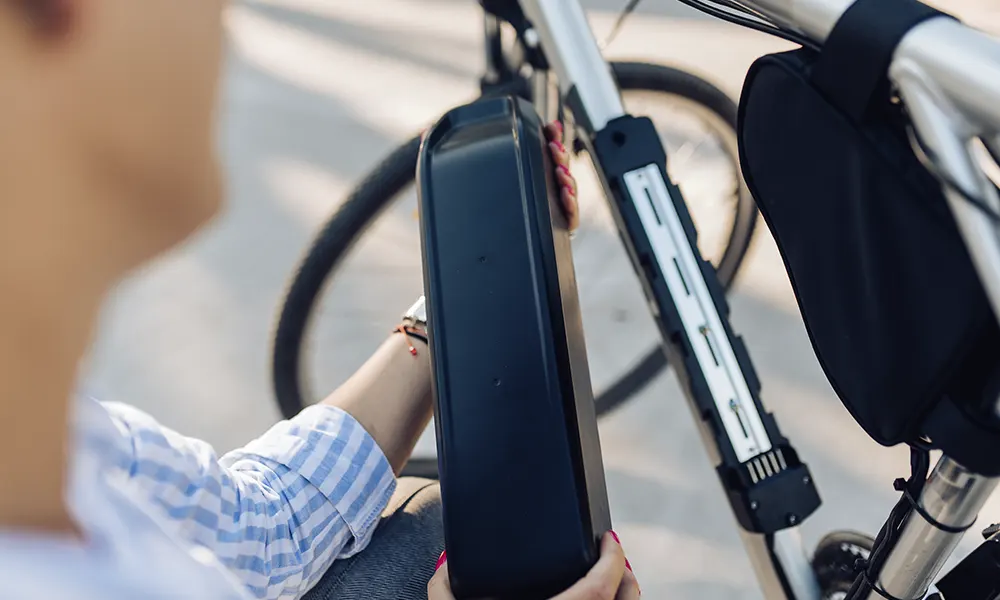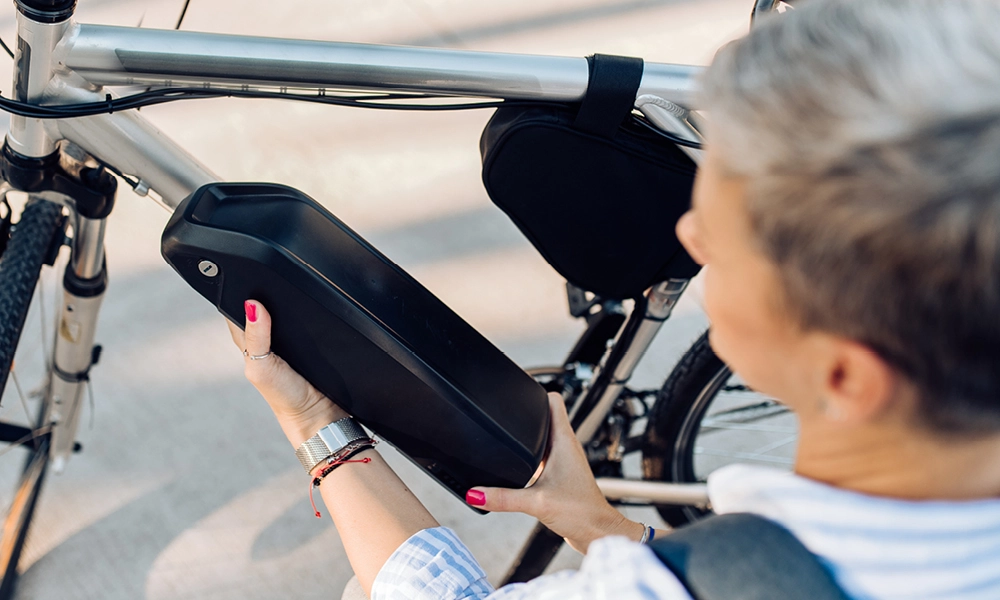HARGING YOUR E-BIKE BATTERY WITH A CAMPER VAN
HERE’S HOW
E-bikes are very much in vogue – something that has long been true of camping holidays, where e-bikes are becoming an increasingly popular piece of equipment. But how do things work out if an e-bike battery has to be charged on the camper van tour? In this blog post, we will show you how to charge your pedelec en route, what you have to bear in mind and what other equipment you will need.
OUT AND ABOUT IN A CAMPER VAN AND ON AN E-BIKE
More and more people are taking their e-bikes on holiday so that they can discover their holiday destination on two wheels. It is no coincidence that numerous tourist destinations now specialize in e-bikers as a potential target group, offering specially marked routes and tour suggestions, for example.
Which is why more and more camping enthusiasts are taking their own electric bikes with them. And no wonder: your own pedelec offers a safer ride than renting a local bike. It can be easily transported in either the camper van or on its own bicycle rack. Once you have reached your destination, it noticeably broadens the range of action at your holiday spot.
HOW DO I CHARGE MY E-BIKE EN ROUTE?
But what happens when you run out of juice and need to charge the battery? In principle, there are several options with a camper van. The most obvious is certainly the pitch on the respective campsite: the local infrastructure is easy to use and – just like in a garage at home – you hardly have to worry about the charging infrastructure.
Things become a little more complicated if you want to charge your e-bike through your camper van. Since e-bike battery chargers almost always require a voltage of 230 V, the standard 12 V connection for charging a mobile phone or laptop in a camper van, for example, is no longer sufficient. The camper has to be prepared for charging e-bikes. The magic word here is “inverter” or voltage transformer.


CHARGING AN E-BIKE WITH AN INVERTER
In principle, an inverter is a device that can convert the DC voltage from car batteries into the AC voltage that comes out of domestic power sockets. In a camper van, it transforms the 12 V battery voltage into 230 V AC voltage. Since larger electrical appliances can also be operated or charged in this way, inverters are now part of the standard equipment in many campers. Anyone planning to purchase such a device will find a number of different current transformers in a various price ranges and output levels on the market.
Charging an e-bike with an inverter requires a high-quality, pure sine wave inverter and not a device that only works with a modified sine wave. This is because the domestic mains voltage usually has a sinusoidal voltage curve and chargers – in this case for the e-bike – are prepared appropriately. Cheaper AC inverters, however, work with so-called modified sine waves, that only simulate the classical sine wave to a greater or lesser extent. Chargers may develop a lot of heat here. In the worst case, the battery may even be damaged.
In addition to the sine curve, the output of an AC inverter also plays a role: An inverter that can always provide the charger’s nominal power without reaching its power limit is recommended for e-bikes. If you want to charge two e-bikes, for example, the device should be able to deliver 500 watts with allowed reserves.
EXAMPLE
CHARGING FIT E-BIKE BATTERIES WITH YOUR CAMPER CAMPER VAN
The FIT e-bike battery is an example of how you can charge an e-bike with an inverter in a camper van. The FIT BASIC CHARGER charges the FIT battery in the shortest possible time with its 4 A charging current, so that you can continue to enjoy the ride on your e-bike. If you have the appropriate infrastructure, the FIT FAST CHARGER even offers a 6 A fast charge option, which makes charging even quicker. The average charging time for a 500 Wh battery is about 3 hours, for a 630 Wh battery 3.8 hours and for a 750 Wh battery 4.5 hours.
Two formulas can be used to calculate the required capacity of the on-board battery and the required inverter power. If you want to charge two e-bike batteries with 500 Wh, for example, you should divide this by the 12 V battery voltage, include a loss of 15 % in your calculation, and thus arrive at 96 Ah. But watch out: since the battery should never be fully discharged, a reserve of around 50 % must also be factored in.
The inverter power required for our example is calculated in turn by multiplying the 4 A of the charging current by the 36 V voltage of the e-bike battery. Once again, you should allow for a loss of 15 %, resulting in a minimum output of 166 W in this case. If we assume two batteries, the inverter should be able to consistently deliver 332 watts. With calculated reserves, a 500 watt voltage transformer would be a good choice.
Required battery capacity:
1000 Wh / 12 V + 15 % loss = 96 Ah
Required inverter output:
4 A x 36 V + 15 % loss = 166 W
5 TIPS FOR CHARGING E-BIKE BATTERIES EN ROUTE
1. Lithium-ion batteries should not be constantly discharged and fully recharged. In principle, a charging status of between 20 and 80 % is recommended if you want to preserve the battery.2. If you want to charge the e-bike battery with the camper van’s own 12 V DC current, you will need an inverter to operate the e-bike battery charger at 230 V.
3. The inverter should be of high quality and be able to provide a true sine wave. It should also meet the minimum battery charging capacity.
4. You can charge more while driving because the alternator, ideally in combination with a charge booster, provides extra power. In this way, even large amounts of electricity can be generated from the car battery.
4. Solar power helps give you more energy reserves. You can also compensate losses from the on-board battery in this way. An output of at least 200 Wp is recommended.
5. You are often on the road with the e-bike? In the following blog post you will get tips on how to increase the battery range:
10 Tips for longer tours
21.05.2021

